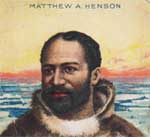
Wave Vidmar
1st American to attempt a solo unsupported
expedition to the North Pole

| |
|
Talk to Wave Live
Two lucky
classrooms will have an opportunity to talk with Wave live from
the North Pole via satellite phone!!!
Learn more |
 |
 |
Purpose:
Students will
gain knowledge and skills in
geography, map reading, arctic history, and cultural awareness.
Discussion
Questions:
- Describe the geography
of the North Pole.
- Which direction would
you travel to get to the North Pole?
- In what ways is the
North Pole the same or different from the South Pole?
- When was the North Pole
first explored and by whom?
- What do you think were
some of the hardships and obstacles the early polar explorers
faced?
- What natural resources
are found at the North Pole?
- What role does the
North Pole play in global economics?
- Describe the history
and culture of the Inuit people.
- Many researchers
believe that the first immigrants came to North America from
Siberia via a narrow strip of land called the Bering Land
Bridge. What are some other theories?
Suggested
Activities:
- Using a map, determine
which five countries comprise the border of the Arctic region.
- Create a timeline
listing the major historical events related to the North Pole.
- Divide students in
small groups and have each group generate an inventory list of
items they would take with them on a solo trip to the North
Pole. Have the groups compare lists.
- The Arctic region has
great natural resources with considerable human and economic
potential. Have students read the article "Preservation,
Petroleum, and Politics," and list the differing positions
held by the interested parties in the debate - including the
various economic, social, political, and cultural factors.
Social
Studies
Resource Links
|